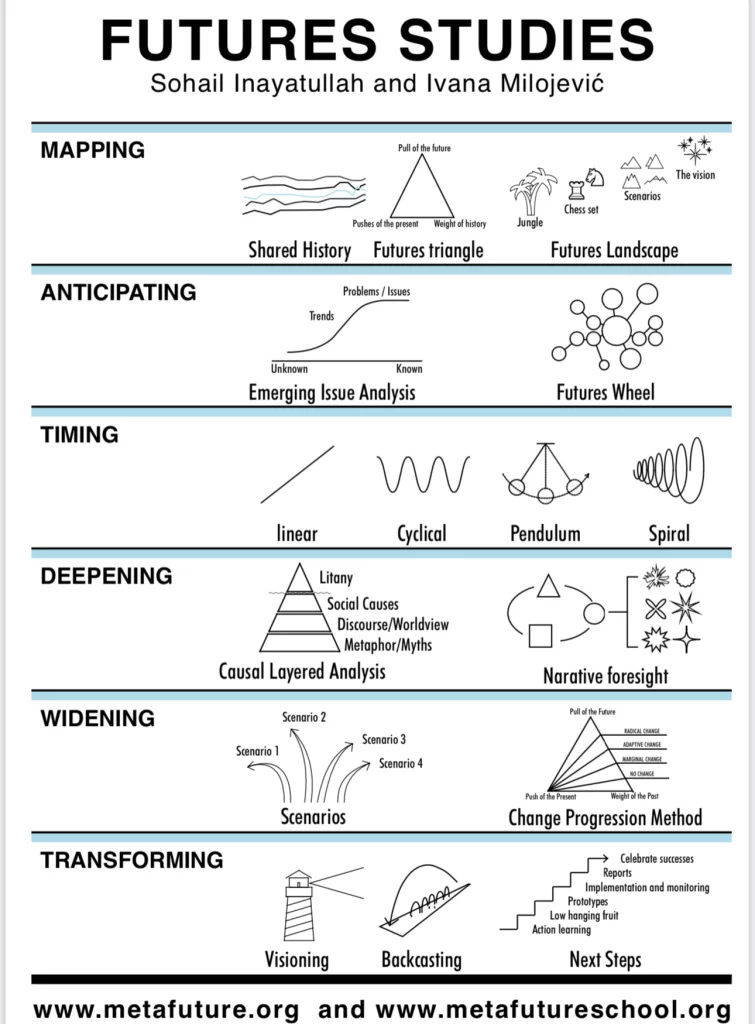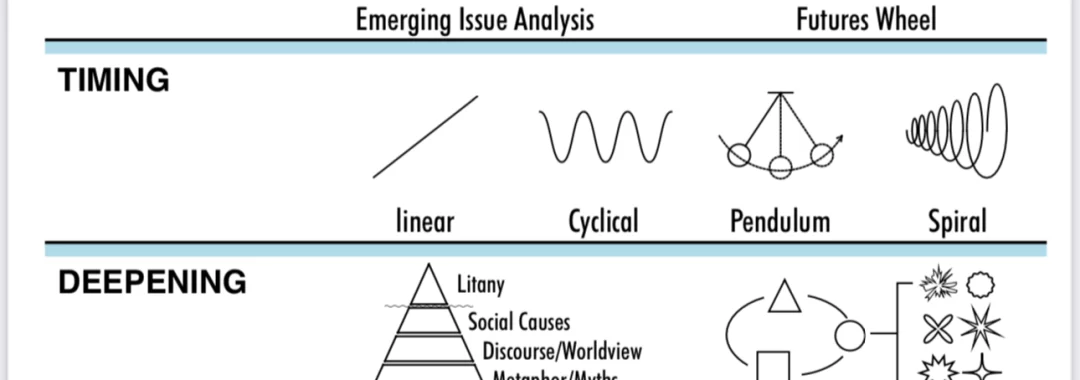Mapping the Present and the Future - through methods and tools such as the futures triangle and the futures landscape.
Anticipating the Future - through methods such as emerging issues analysis and the futures wheel.
Timing the Future - understanding the grand patterns of change, macrohistory and macrofutures.
Deepening the Future - through methods such as causal layered analysis and multiple selves theory.
Creating Alternatives to the Present - through methods such as scenarios and nuts and bolts.
Transforming the Present and Creating the Future - through visioning, backcasting, anticipatory action learning and the transcend conflict resolution method.


